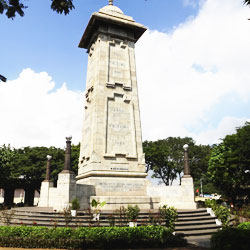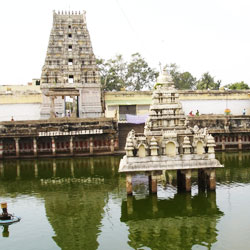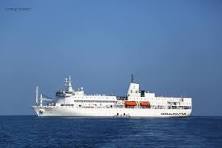View Mobile Number
tirupatigreenindiatourism@gmail.com
7N 8D Andaman Cruise Tour Package
Link Copied
Duration : 7 Nights / 8 Days
Destination Covered : Port Blair, Neil Island, Havelock, Cellular Jail
Tour Activities : Boat Cruise, Beaches Sightseeing
Tour Themes : Ship & Cruise
33500
Per Person
* Mentioned prices may vary depending upon date of travel, hotel availability, surge pricing and seasonal rush.
Port Blair, Neil Island and Havelock Tour Overview
Andaman Cruise Tour Package
Chennai to Andaman Cruise Travel 3Night 2 Days
4 Night 5 Days Andaman Sightseeing
Return Flight
Port Blair, Neil Island and Havelock Tour Itinerary
Day 1
Day 2
CRUISE SAILING This day you will sailing in the cruise which will be a memorable experience for years. Overnight stay in the cruise.
Morning Tea coffee 5 30 To 7.00 Am
Breakfast 7.30 To 8.30AM
Lunch Time 12.00 To 1.00 PM
Evening Tea Snacks 4.00 To 5.00 PM
Night Dinner 6.30 To 7.30 PM
Morning Tea coffee 5 30 To 7.00 Am
Breakfast 7.30 To 8.30AM
Lunch Time 12.00 To 1.00 PM
Evening Tea Snacks 4.00 To 5.00 PM
Night Dinner 6.30 To 7.30 PM
Day 3
CRUISE SAILING This day you will sailing in the cruise which will be a memorable experience for years. Overnight stay in the cruise.
Morning Tea coffee 5 30 To 7.00 Am
Breakfast 7.30 To 8.30AM
Lunch Time 12.00 To 1.00 PM
Evening Tea Snacks 4.00 To 5.00 PM
Night Dinner 6.30 To 7.30 PM
Morning Tea coffee 5 30 To 7.00 Am
Breakfast 7.30 To 8.30AM
Lunch Time 12.00 To 1.00 PM
Evening Tea Snacks 4.00 To 5.00 PM
Night Dinner 6.30 To 7.30 PM
Day 4
M V SWARA DWEEP
Morning Port Blair Arrival
Morning Tea 5.30 To 7.00 AM
Breakfast 7.30 To 8. 30AM
Harbor Pick-up and Hotel Transfer
Sea Scape Port Blair Check-in Time : 08:00
Elephant Beach
Start Time : undefined Duration : 8 hrs Timezone : Asia/Kathmandu
Morning at leisure. (Optional tour to Elephant Beach at a supplement Cost, just 40 min by Boat this beach offers snorkelers calm blue shallow waters and is the perfect spot for beginner snorkelers. It’s also a great place to just spend time lazing on the beach. The beach is very scenic with fallen trees and white sand giving the photographer some beautiful pictures to take back home). Later in the afternoon transfer to Havelock Jetty to take the return ferry to Port Blair as per ferry timing. Upon return from Havelock Island, transfer to Hotel. Overnight stay at respective Hotel / Resort at Port Bal
Cellular Jail - Port Blair
At a distance of 1.5 km from Port Blair Central Bus Stand, the Cellular Jail, also known as Kala Pani, was a colonial prison located at Port Blair in the Andaman & Nicobar Islands. The prison was known to house many notable Indian activists during the struggle for India's independence. Today, the complex serves as a national memorial monument and also one of the top places to visit in Port Blair.
The construction of the Cellular Jail was started by the British in 1896 and was completed in 1906. The penal settlement was established in Andamans by the British after the First War of Independence in 1857. It was the beginning of the agonizing story of freedom fighters in the massive and awful jails at Viper Island followed by the Cellular Jail. The prison was used by the British especially to exile political prisoners to the remote archipelago. Many notable freedom fighters such as Batukeshwar Dutt, Bhagat Singh and Veer Savarkar, among others, were imprisoned here during the struggle for India's independence.
Cellular Jail is a massive three-storeyed structure with seven wings, radiating from a central watch tower, shaped like spokes of a wheel. Each wing in this jail had three storeys, which consist of total of 698 cells. The architecture of Cellular Jail was conceptualized on the basis of 'Pennsylvania System or Separate System' theory in which separate confinement is necessary for each inmate for complete isolation from other inmates. No communication of any kind was possible between prisoners in the same or different wings. The design of Cellular Jail consists of radiating wings that allow a single guard to keep watch on all the prisoners from the central tower.
After Independence in 1947, Cellular Jail was declared as a National Memorial. Today the entrance block of the National Memorial houses, Freedom Fighters Photo and Exhibition Gallery in the ground floor. The first floor of the building has an Art Gallery, Netaji Gallery and a Library on Freedom Movement. Gallery on First War of Independence and on Old Photographs Gallery have also been set up in the premises of the Jail. An eternal flame of Freedom-Swatantrya Jyoti has been erected in the vicinity of the Cellular Jail in memory of all freedom fighters and martyrs. In addition, visitors can also experience light and sound show in Hindi and English during evening.
Morning Port Blair Arrival
Morning Tea 5.30 To 7.00 AM
Breakfast 7.30 To 8. 30AM
Harbor Pick-up and Hotel Transfer
Sea Scape Port Blair Check-in Time : 08:00
Elephant Beach
Start Time : undefined Duration : 8 hrs Timezone : Asia/Kathmandu
Morning at leisure. (Optional tour to Elephant Beach at a supplement Cost, just 40 min by Boat this beach offers snorkelers calm blue shallow waters and is the perfect spot for beginner snorkelers. It’s also a great place to just spend time lazing on the beach. The beach is very scenic with fallen trees and white sand giving the photographer some beautiful pictures to take back home). Later in the afternoon transfer to Havelock Jetty to take the return ferry to Port Blair as per ferry timing. Upon return from Havelock Island, transfer to Hotel. Overnight stay at respective Hotel / Resort at Port Bal
Cellular Jail - Port Blair
At a distance of 1.5 km from Port Blair Central Bus Stand, the Cellular Jail, also known as Kala Pani, was a colonial prison located at Port Blair in the Andaman & Nicobar Islands. The prison was known to house many notable Indian activists during the struggle for India's independence. Today, the complex serves as a national memorial monument and also one of the top places to visit in Port Blair.
The construction of the Cellular Jail was started by the British in 1896 and was completed in 1906. The penal settlement was established in Andamans by the British after the First War of Independence in 1857. It was the beginning of the agonizing story of freedom fighters in the massive and awful jails at Viper Island followed by the Cellular Jail. The prison was used by the British especially to exile political prisoners to the remote archipelago. Many notable freedom fighters such as Batukeshwar Dutt, Bhagat Singh and Veer Savarkar, among others, were imprisoned here during the struggle for India's independence.
Cellular Jail is a massive three-storeyed structure with seven wings, radiating from a central watch tower, shaped like spokes of a wheel. Each wing in this jail had three storeys, which consist of total of 698 cells. The architecture of Cellular Jail was conceptualized on the basis of 'Pennsylvania System or Separate System' theory in which separate confinement is necessary for each inmate for complete isolation from other inmates. No communication of any kind was possible between prisoners in the same or different wings. The design of Cellular Jail consists of radiating wings that allow a single guard to keep watch on all the prisoners from the central tower.
After Independence in 1947, Cellular Jail was declared as a National Memorial. Today the entrance block of the National Memorial houses, Freedom Fighters Photo and Exhibition Gallery in the ground floor. The first floor of the building has an Art Gallery, Netaji Gallery and a Library on Freedom Movement. Gallery on First War of Independence and on Old Photographs Gallery have also been set up in the premises of the Jail. An eternal flame of Freedom-Swatantrya Jyoti has been erected in the vicinity of the Cellular Jail in memory of all freedom fighters and martyrs. In addition, visitors can also experience light and sound show in Hindi and English during evening.
Day 5
Havelock
Radhanagar Beach - Havelock Island
At a distance of 65 km from Port Blair Central Bus Stand (road + ferry) and 11 km from Havelock Ferry Ghat, Radhanagar Beach, also known as Beach #7, is situated on the south coast of Havelock Island and is the most famous Andaman Beach. Radhanagar Beach is counted among the top 10 beautiful beaches of Asia and among best beaches in the world by Time Magazine.
The most visited place in Andamans, Radhanagar is a long white sandy beach that sprawls across 2 km length and an average width of 30 to 40 m. Known for its picturesque sunset, white sand and turquoise blue waters, the beach is a very popular hub lying on the western coast of Havelock Island. The sand is white and very fine in grain. The lush and verdant trees on the side of beach offer tourists an opportunity to unwind and relish the serenity and nature's charm. The breathtaking sight of sunset on this beach makes the tourists forget all the woes of life.
Due to its reputation and popularity one would expect large crowd of tourists rushing to the beach, but amazingly the Radhanagar mostly remains isolated and secluded. The beach is also very safe for swimming. There are no water sports but it is known to be one of the best places for nature lovers as it offers a wide range of flora and fauna. It is also a great place to spend some quality time with family and friends.
The Havelock Island can be reached from Port Blair using government-operated ferries and private cruises. There are also helicopter services. From Havelock Ferry Ghat, one can take a local bus or hire an auto or rent a bike or bicycle to reach Radhanagar Beach.
The turquoise blue sea and white sand make this beach a perfect spot to bask in the midst of nature's bounty. Radhanagar Beach is positioned just 7 kilometres away from Vijaynagar Beach and Dolphin Yatri Niwas and about 12 kms from Havelock Island.
Radhanagar Beach - Havelock Island
At a distance of 65 km from Port Blair Central Bus Stand (road + ferry) and 11 km from Havelock Ferry Ghat, Radhanagar Beach, also known as Beach #7, is situated on the south coast of Havelock Island and is the most famous Andaman Beach. Radhanagar Beach is counted among the top 10 beautiful beaches of Asia and among best beaches in the world by Time Magazine.
The most visited place in Andamans, Radhanagar is a long white sandy beach that sprawls across 2 km length and an average width of 30 to 40 m. Known for its picturesque sunset, white sand and turquoise blue waters, the beach is a very popular hub lying on the western coast of Havelock Island. The sand is white and very fine in grain. The lush and verdant trees on the side of beach offer tourists an opportunity to unwind and relish the serenity and nature's charm. The breathtaking sight of sunset on this beach makes the tourists forget all the woes of life.
Due to its reputation and popularity one would expect large crowd of tourists rushing to the beach, but amazingly the Radhanagar mostly remains isolated and secluded. The beach is also very safe for swimming. There are no water sports but it is known to be one of the best places for nature lovers as it offers a wide range of flora and fauna. It is also a great place to spend some quality time with family and friends.
The Havelock Island can be reached from Port Blair using government-operated ferries and private cruises. There are also helicopter services. From Havelock Ferry Ghat, one can take a local bus or hire an auto or rent a bike or bicycle to reach Radhanagar Beach.
The turquoise blue sea and white sand make this beach a perfect spot to bask in the midst of nature's bounty. Radhanagar Beach is positioned just 7 kilometres away from Vijaynagar Beach and Dolphin Yatri Niwas and about 12 kms from Havelock Island.
Day 6
After an early breakfast and as per ferry timing proceed to the Jetty to take the Ferry to Neil Island. After check-in at hotel, proceed for sightseeing of this lush green Island is known for its plantations and tropical forests. The pristine white sandy beaches at Sitapur, Bharatpur and Lakshmanpur are worth a visit. The breath-taking view of sea and the lush green forests on the island rejuvenate the senses. Return to hotel. Overnight at Neil Island
Day 7
Morning at leisure. Later in the afternoon transfer to Havelock Jetty to take the return ferry to Port Blair as per ferry timing. Upon return from Havelock Island, transfer to Hotel. Overnight stay at respective Hotel / Resort at Port Blair.
Day 8
More Details about Port Blair, Neil Island and Havelock Tour
Inclusions
- MAP (Room + Breakfast + Lunch/Dinner)
- Hotel
- Flights
- Sightseeing
- Transfers
- Pickup-Drop
- Private Cab
- Private Guide
- Entry Tickets/Passes
- Welcome Drink
- Non Veg Meals
Exclusions
- Water Sports Optional
Payments Terms
- * 50% Advance Percentage of total booking amount
- * Airfare/Transport fare to be paid full at one time in advance.
Price & Rates
| No of pax | Age Limit | Price per pax (Rs) |
|---|---|---|
| No of pax Adult | Age Limit Above 12 years | Price per pax (Rs) INR 33500 / Adult ( With Tax ) |
Cancellation & Refund Policy
- * Upon cancellation, refund will be made after deducting the Retention Amount.
- * Retention Amount varies as per the number of days left before your package start date.
- * Refund will be made within 15 working days from the date of receipt of the cancellation.
Packages by Theme
Fill Enquiry Form Below
Explore Tour Packages by Destination
















